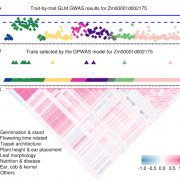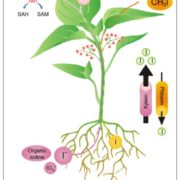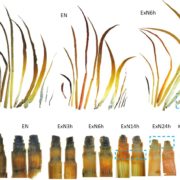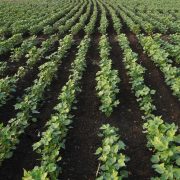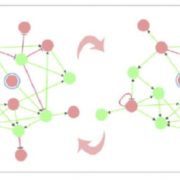Genetic gains underpinning a little-known strawberry Green Revolution
 The domestication of cultivated strawberry (Fragaria × ananassa) traces back approximately 300 years, providing us with a relatively comprehensive genealogy of this artificial hybrid species. Strawberry yield in the US has increased by 2,755% since the 1960’s, largely owing to the California strawberry Green Revolution. Through an analysis of California strawberry germplasm, researchers have pinpointed significant factors contributing to this remarkable increase. One crucial contributor was the introduction of photoperiod-insensitive, PERPETUAL FLOWERING hybrids during the 1970s, which substantially enhanced yield potential. Additionally, the adoption of methyl bromide fumigation played a pivotal role by significantly reducing yield losses attributed to diseases. However, the widespread use of fumigation has led to a decline in resistance among contemporary strawberry accessions to soil-borne pathogens such as Verticillium wilt and Phytophthora crown rot. This poses a potential threat to strawberry production in the US, especially with the phasing out of methyl bromide. (Summary by Villő Bernád) Nature Comms. 10.1038/s41467-024-46421-6
The domestication of cultivated strawberry (Fragaria × ananassa) traces back approximately 300 years, providing us with a relatively comprehensive genealogy of this artificial hybrid species. Strawberry yield in the US has increased by 2,755% since the 1960’s, largely owing to the California strawberry Green Revolution. Through an analysis of California strawberry germplasm, researchers have pinpointed significant factors contributing to this remarkable increase. One crucial contributor was the introduction of photoperiod-insensitive, PERPETUAL FLOWERING hybrids during the 1970s, which substantially enhanced yield potential. Additionally, the adoption of methyl bromide fumigation played a pivotal role by significantly reducing yield losses attributed to diseases. However, the widespread use of fumigation has led to a decline in resistance among contemporary strawberry accessions to soil-borne pathogens such as Verticillium wilt and Phytophthora crown rot. This poses a potential threat to strawberry production in the US, especially with the phasing out of methyl bromide. (Summary by Villő Bernád) Nature Comms. 10.1038/s41467-024-46421-6


